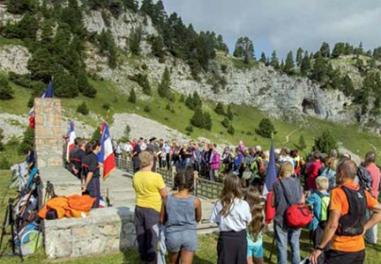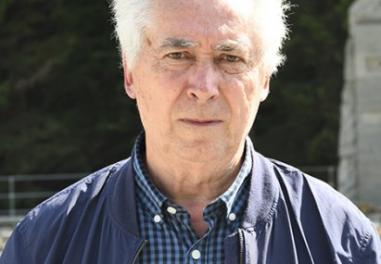Nantua Museum
In a redesigned layout, accessible to all, the Ain Museum of the Resistance and Deportation gives an up-to-date interpretation of the events of the Second World War, through the experiences of the inhabitants of the Ain and the strategic issues of importance to the department.

The Musée de la Résistance et de la Déportation de l’Ain is housed in the former Nantua prison, in the heart of the Haut-Bugey area, an important remembrance site for the Resistance. It was founded in 1985 by the association of friends of the museum, comprised of Resistance veterans and deportees. Formally opened on 18 October 1986, it passed into municipal control in 1990, and has been run by the departmental museums directorate since 2004. Its rich collection (films, photographs, posters, uniforms, military equipment, deportees’ belongings, etc.), consisting mostly of donations from Ain inhabitants, enabled it to obtain ‘Controlled Museum’ status in 1992 and the Musée de France label in 2003.
The museum renovation was completed in September 2017, with support from the DPMA’s regional partnerships programme. The priorities were to ensure accessibility, update its historiographical approach in line with current thinking and develop the collections. The different visitor resources and tools on offer (multimedia, touchscreens, etc.) mean that the museum is accessible to a broad public, including people with disabilities. The display, based around the experiences of Ain inhabitants between 1939 and 1945, reveals the strategic importance of this area, situated between Lyon and Geneva, and its peculiarities (divided by the war, a maquis stronghold, sustained three German counter-attacks in 1944 and fierce repression). First-hand accounts of engagements between 1940 and 1944 punctuate the display. Other issues addressed are the reconciling of history and memory in this place imbued with the spirit of its founders, and the construction of remembrance and its usages since 1945.
A depiction of “life in the maquis”, built by the founders in 1993, has been preserved. An important element in the museum’s history, this space presents the Resistance from the point of view of those who participated in it. Five multimedia terminals offer the opportunity to hear extracts from eye-witness accounts. An animated map places the Ain in the context of 1939 and the successive occupations: German, in June 1940, then German and Italian, in November 1942. Dedicated areas look at what life was like in the Pays de Gex. Objects like a wood-gas generator and a bicycle with tyres made of springs demonstrate how people had to adapt to the restrictions of wartime. Three areas discuss the early resistance, the birth of the movements, the role of networks, the Armée Secrète (Secret Army) and the unification of the Resistance. A second animated map shows the locations of the maquis camps, parachute drops and acts of sabotage. A series of rooms look at the structure of the maquis and the help received from the Allies in the form of two-way radios (MCR-1, S-Phone transmitter). There is an immersive area devoted to parachute drops and acts of sabotage.
Two documentaries analyse images from the film Ceux du maquis, which was made in the Cize and Granges camps, and footage of the maquis parade in Oyonnax on 11 November 1943. A specific area deals with the repression, persecution and rescuing of Jews. Next, the battles for Liberation, the end of the war, the return of the deportees, the reality of the concentration camps and the impact of the deportations are discussed.
The construction of remembrance post-1945 through monumental heritage, the history of the voluntary organisations, decorations, the Righteous Among the Nations, the changing face of commemorations and the role of a Resistance museum today, all enrich the visit. In addition, the exhibition Les Jours Sans (Days Without), produced by the Resistance and Deportation History Centre in Lyon, runs from July to November.
Read more
Website
Remembrance sites
Ain Museum of the Resistance and Deportation
Lyon Resistance and Deportation History Centre
Articles of the review
-
The file

Remembrance tourism in Auvergne-Rhône-Alpes
The Second World War left deep scars on the Auvergne-Rhône-Alpes landscape. Today, the region tells its story through its museums, memorials and history centres, all of which are coordinated at regional level by Réseau Mémorha to ensure the consistency of their cultural and remembrance offering. ...Read more -
The event

A new national cemetery in Vercors
In 2018, the French State will acquire the Pas de l’Aiguille site, in the department of Isère, the 274th military cemetery to come under the responsibility of the Ministry of the Armed Forces. This will complete the process of acquisition of the three cemeteries in Vercors, begun in 2014. ...Read more -
The interview

Gérard Métral
Il est le fils d’Alphonse Métral, l’un des fondateurs de l’association des Rescapés des Glières. Après des études en arts plastiques à Paris, il est l’assistant du sculpteur Émile Gilioli, auteur du Monument national à la Résistance des Glières et il préside aujourd’hui l’association des Glières. ...Read more

